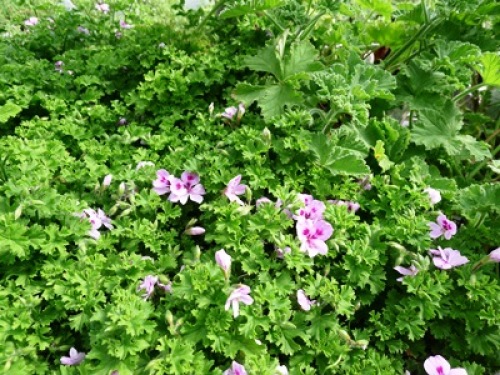
During one of the first forays into the garden center this spring, I spotted a long table covered with scented geraniums. These lovely plants in the genus Pelargonium are not only beautiful and easy to grow, but they’re also delicious. Just like other edible flowers, scented geraniums add more variety to the vegetable bed.
There are dozens of scented geraniums that include rose, lemon, nutmeg, peppermint, apple and orange. While the plants can be dotted with small blossoms, it’s the foliage that gives the plants their delectable scents.
While you’re planning the vegetable garden this season, it might be nice to add some of these scented geraniums to fill in along the patio walkway or add to container plantings. The foliage grows quickly and comes in different sizes and shades of green. Each variety offers a way to spice up special recipes; just be sure to wash and dry the leaves before eating.
I’ve used rose-scented geraniums as a sweet flavoring and decoration when baking cakes, but there are other ways to use scented geraniums in cooking too.
A popular use is to chop and used the fragrant leaves in garden-fresh salads. Good choices include ginger or apple geraniums mixed with baby lettuces and arugula. Scented leaves can also be used to flavor soups, chopped and added to quick stir-fry meals, minced to top grilled fish, or chopped and scattered on top of creamy pasta dishes.
To grow any of the scented geraniums, select a spot that has full to partial sun. Wait to plant until after the danger of frost has passed. Amend the soil to make sure it will drain well, because geraniums like a drier soil. Place plants at a depth that’s slightly shallower than the depth of the pot.
The leaves can be clipped and used as they grow and fill in. The plants are perennial in warmer zones, but in cooler areas, they can be brought inside to overwinter. Continue to use the fresh leaves in cooking through the winter as a pleasant reminder of warm summer days.


















Comments
Log in or create an account to post a comment.
Sign up Log in